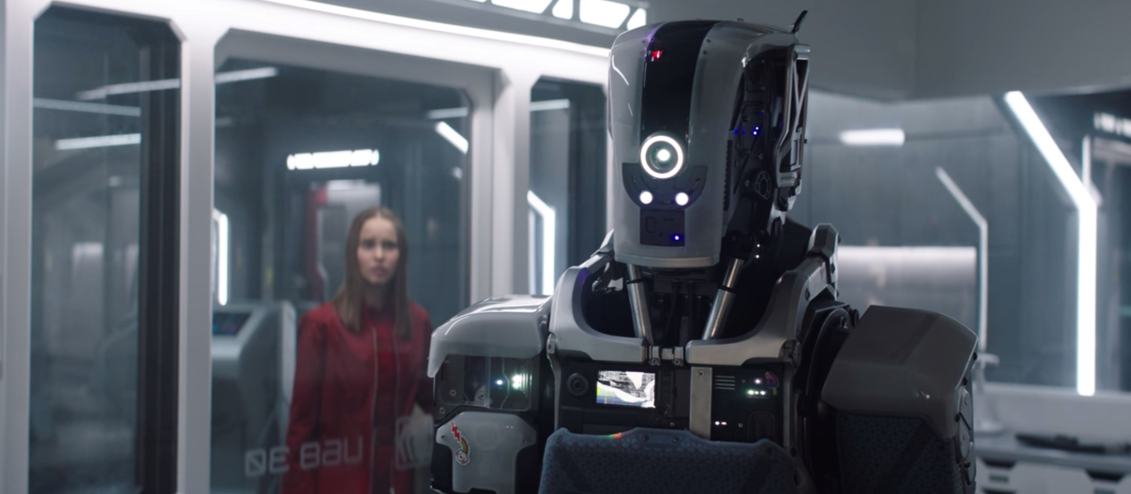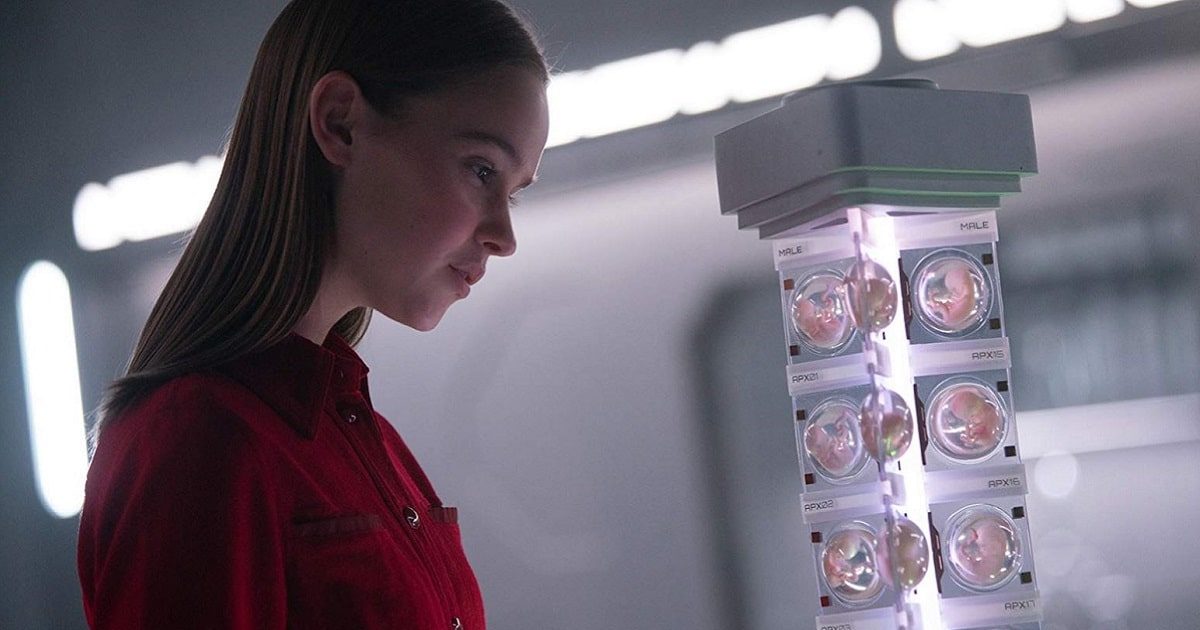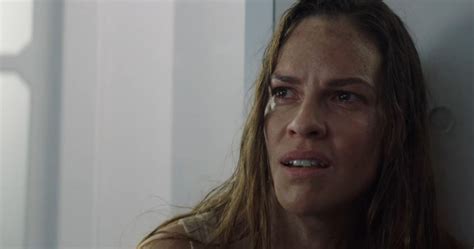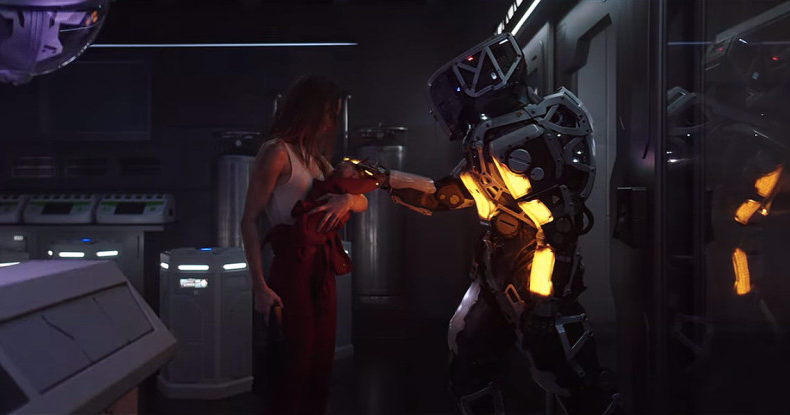

“This facility was designed to give humanity a second chance, one that began with you, daughter.”
Regardless of premise, setting, or genre, films that try to tell a story using only a few characters will always draw my attention based on that element alone. In many ways, the small scale film is the antithesis of the standard blockbuster. In a blockbuster, you throw a handful of famous faces on screen, introduce a semi-dramatic narrative arc that takes us all over the country or maybe the world, add some stunts, some green screen car chases, some minor characters who you’ll forget were in the movie… the sheer amount of things that are crammed in there are enough to at least hold our attention for the duration even though the aftertaste may leave us unsatisfied. But beneath the glamorous excess many of those bloated films are actually quite empty. They have curb appeal but fail to deliver anything beyond that.1 But to succeed with a minimal cast, without the crutches of Hollywood excess and studio polish, the script has to be airtight and the performances must be committed. Because without the thick layers of pleasant distraction afforded to larger films, weaknesses in these areas become too obvious and the film falls flat.
Science-fiction has a clear advantage in such an endeavor. A genre concerned more with ideas than plot lends itself to world-building and discussion, elements which can be effectively developed through dialogue and tame action. I Am Mother is a sort of hybrid between a blockbuster and an indie sci-fi film. It features some elaborate effects work and swerves toward an action-packed climax, but its success mostly hinges on the merits of its twisty script and the performances by Clara Rugaard and Hilary Swank. The premise easily piques our interest. An unspecified catastrophic event has led to the extinction of humanity. In an underground bunker, an android called Mother (voiced by Rose Byrne) is activated to begin repopulating the earth. Via montage we watch Mother select one of her tens of thousands of cryopreserved embryos, grow it in a tank in some mysterious 24 hour process, then raise the girl to young adulthood. Now in the present, Daughter (Rugaard) seems to understand that her life is not normal, but its limitations are necessary. She must stay within the confines of the bunker while the benevolent Mother provides for her every need and teaches her art, philosophy, and medicine. Mother promises that once she feels she has successfully raised Daughter, that she will begin the process with another embryo.

But Daughter soon makes a few discoveries that lead to some uncomfortable questions about Mother. When the power goes out while Mother is powered down for recharging, Daughter resourcefully patches the electrical wire and captures the rat that chewed through it. When Mother boots back up, she immediately incinerates the rat and chastens Daughter for her curiosity of the outside world, which, she assures her, is still contaminated and unsafe.
Lurking near the airlock one night while Mother is recharging, contemplating a brief excursion into the unknown, Daughter hears screaming from outside. Uncertain what to do, she eventually allows Woman2 (Swank) into the airlock. Woman is bleeding out from a gunshot wound near her hip, but before Daughter can open the door to tend to her, Mother, alerted by the airlock being opened, arrives at the scene and once again scolds Daughter for her curiosity.
For a brief period of time, Woman’s presence remains a secret. An interesting dynamic presents itself—a woman from the outside world, distrustful of everything she finds inside the bunker, is dying; her only hope of survival is to trust a teenager who has never met another human and has been raised by an indoctrinating robot. Inevitably, Mother becomes aware of Woman’s presence but rather than toss her in the incinerator like the rat, she takes her to the medical ward and tries to treat her wound. This is when things begin to get interesting because Daughter’s entire worldview crumbles beneath her as Woman and Mother offer her conflicting views of reality. There’s a contagion on the surface, but Woman lives in the mines with a group of other survivors. A drone shot Woman, but Mother says the bullet matches the caliber of Woman’s gun, not those with which the patrol drones are equipped.

I Am Mother conjures most of its drama by continually circling back on itself as Daughter gradually forms a complete picture of what exactly happened to humanity, what Mother’s intentions are, and just how fine-tuned her far-reaching plans for the future are. There are a series of revelations that are very juicy and just ambiguous enough to remain open questions, giving the film some potential longevity where one that uncovers all of its mysteries would be a bit more dull on repeat viewings.
The film succeeds in large part because of Rugaard and Swank. In such a confined setting and with only the two of them (plus Mother) providing substantial onscreen presence, the details of their performances are crucial. As a two-time Best Actress winner, Swank has little trouble handling herself, but it is Rugaard, a relative newcomer who was still a teenager when the film was made, whose performance pulls I Am Mother together. As the film unfolds and Woman plants seeds of doubt in Daughter’s mind, even details as tiny as Rugaard’s facial expressions become pertinent. Confronted by the faceless monitoring of Mother, Daughter, the film’s most innocent character, must carefully control her words and movements so as to not betray herself. Rugaard’s ability to convey a sense of inner conflict is like a complete performance on its own.
What makes Rugaard’s performance so entrancing is that the script (by Michael Lloyd Green) is written so that our perspective is the same as Daughter’s. Her moments of confusion and uncertainty are ours. Stuck mostly in a single location for the duration of the film (another bonus point on my scorecard), the central conflict is essentially two women trying to convince a young girl that she should not trust the other’s explanation of reality. That’s a pretty highbrow concept and one that can only work if the actors make it so.

There are a few unfortunate slip ups that were bound to come with the unique narrative territory. Specifically, I think when the film shifts to action-thriller it becomes less interesting than when it was playing with the idea of a robot raising a child in isolation. That novel element is what gives I Am Mother an edge, and straying too far from it does not prove fruitful enough to warrant the shift. Additionally, I think the film stumbles a little bit when Daughter is confronted with some startling revelations. In some ways, the notion that Daughter has never met another human, that she’s never breathed unfiltered air or seen trees, etc. is very thoroughly integrated into the story (e.g. at times, Daughter’s movements seem robotic because she models herself after Mother.) But this is seemingly forgotten in other instances and Daughter reacts to situations as a regular human with a regular upbringing would. It’s a minor complaint, and it’s plausible that Mother’s education was a sufficient substitute, but I would have preferred if more time was actually spent showing us the oddities that would arise in such an upbringing than on the dramatic climax of Mother’s grand plan.
Though the cinematic lineage of I Am Mother is easily traceable—it is unashamed to lean into classic tropes and borrow from films like The Terminator but also nicely utilizes the small scale economy of modern gems like Moon and Ex Machina—I think it provides enough of a punch of its own to merit a watch. Considering it’s the debut of director Grant Sputore (who as of this writing does not yet have his own Wikipedia page), I think it’s worth jumping on his bandwagon because I expect that this relatively modest sci-fi thriller will lead to a bigger budget affair for his next outing. Here’s to hoping that the creativity evident in I Am Mother is not squandered when a big studio budget is in play.
1. Obviously there are plenty of counter-examples to this phenomenon. I don’t think all blockbusters are bad; my point is that a blockbuster can be bad and still fool you into thinking it was decent.
2. I’m undecided on whether or not I like the fact that the characters are not explicitly named.